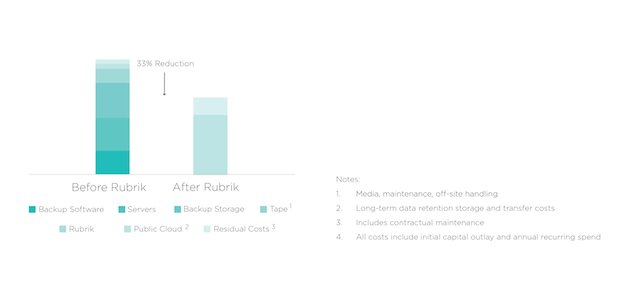Berkeley College Deploys Rubrik for Backup Reliability in Microsoft Azure
To help IT staff manage applications and data growth within the cloud, Berkeley College recently switched over to using Rubrik for backup, disaster recovery, replication, cloud archival and other workflows. As a result, the college has cut costs by 33 percent, reduced recovery time objective (RTO) to nearly zero and archived data to Microsoft Azure for long-term retention.
The private college has approximately 8,000 students across nine campuses located in New York and New Jersey. IT staff members were previously using an outdated backup solution that was not built for the cloud era, according to an interview between Chief Information Officer Leonard De Botton, Director of Infrastructure Joseph Pagano and Rubrik. “We were protecting data with old age backup when we had new age virtualized servers,” De Botton told the Palo Alto-based software company.
Therefore, backup administration used to be complex and time intensive. Some backups would take around three days for one server, and these were usually unstable with constant failures. “Additionally, replication was cumbersome and complex, requiring us to manually configure processes,” while tape was “highly inefficient, expensive and time consuming,” the interviewees said.
De Botton and Pagano began searching for a data management solution that would enable cloud backup every two hours, restoring data that might be affected by ransomware and other disruptions. They went with Rubrik’s Cloud Data Management platform — not just for disaster recovery, but for “data archival to Microsoft Azure with redundancy, replication, high availability and data protection.”
As a result, restoring data is now easy and fast for IT staff, reducing RTO from days to seconds, according to a new case study. In addition, Berkeley College is experiencing a 33 percent reduction in total cost of ownership (TCO) due to consolidating tape, servers and hardware to a single platform, Microsoft Azure, and freeing up time for employees. (See infographic below.)

Image: Rubrik.
"With Rubrik’s platform, we can meet these objectives while freeing up our time to use its solution for use cases beyond backup. We have the flexibility to spin up applications on Rubrik in a matter of minutes,” De Botton said.
To learn more, view the full case study on the Rubrik site.
About the Author
Sri Ravipati is Web producer for THE Journal and Campus Technology. She can be reached at [email protected].